About Strasbourg
With its monumental cathedral featuring carvings as delicate as any piece of lacework, Strasbourg is one of Europe's most attractive cities. Thanks to the richness and sheer density of its heritage sites, the entire town centre has been listed as UNESCO World Heritage. Strasbourg is definitely well worth a visit, to discover its history, its cuisine and its unique atmosphere.|
Founded by the Romans in 12 BC, Strasbourg («the town at the crossroads») has always occupied a strategic position in Europe. Situated at a meeting point of the North-South and East-West communication routes, the town has benefited from commerce of all kinds and also encouraged the free movement of ideas. During the 11th century, construction work got underway on the cathedral, a project which would last for two and a half centuries and would see the town emerge as one of the greatest cities in the Rhineland area and in Europe. Strasbourg's history can be appreciated from the sheer diversity of its particularly well preserved architectural heritage. CathedralStrasbourg cathedral is an outstanding masterpiece of Gothic art. The first stone was laid in 1015 and the spire was completed in 1439. Described as "a skilful combination of monumental size and delicateness" by Victor Hugo, its facade offers a fantastic wealth of ornamental features. The 142 m spire is a masterpiece of architectural elegance and intricacy. Up until the 19th century, the cathedral was the highest building in the whole of the Christian world. |
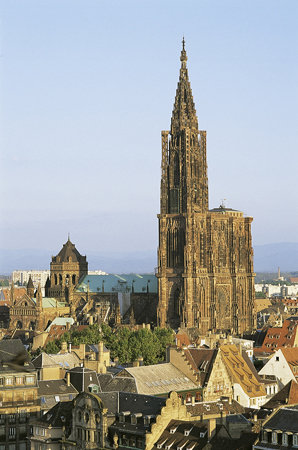 Cathedral (Y. NOTO-CAMPANELLA) |
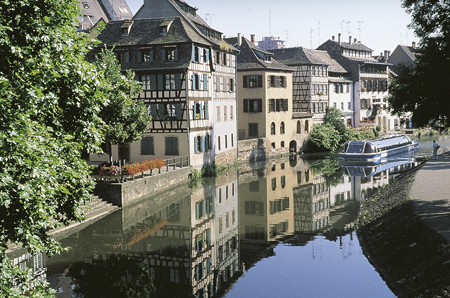 Petite France (J. HAMPE) |
Petite France This is the most picturesque district of old Strasbourg. Fishermen, millers and tanners once lived and worked in this part of town where the streets have been built level with the waterways. The magnificent half-timbered houses date from the 16th and 17th centuries. Their sloping roofs open out onto lofts where hides were once dried. |
| The European institutions As the official home town of the European Parliament, the Council of Europe and the Human Rights Building, Strasbourg has a passion for its international role. This highly cosmopolitan character can also be found in the University, its economic and cultural life and its streets. |
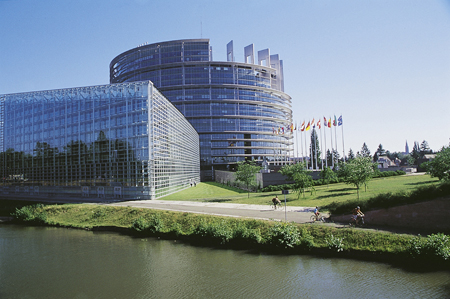 European Parliament (AIRDASOL-ROTHAN) |
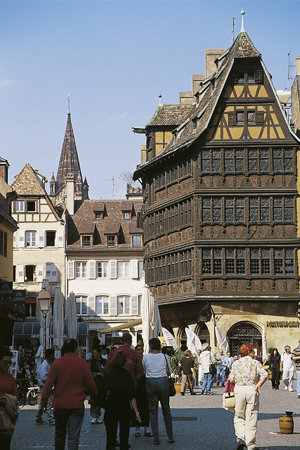 Maison Kammerzell (AIRDIASOL-ROTHAN) |
Food You will quickly fall under the charm of Alsatian cuisine with its succulent specialities served in a friendly atmosphere. In this field, Alsace holds its head up high with starred restaurant and countless tranquil country inns and "winstubs". In short, a myriad of place to choose from to sample the emblematic dishes of Alsatian cuisine: sauerkraut, Bäckeoffe, matelote, Flammekueche, and all sorts of typical dishes served in the "winstubs", the forerunner of the wine bar. And don't miss out on tasting Alsace wines which are appellation d'origine contrôlée. And there are other specialities such as eau de vie, liqueurs and beer, for which Alsace ensures over half the national production. [Excessive consumption of alcohol is dangerous for your health. Drink with moderation.] On the right is a picture of Maison Kammerzell, the restaurant in which the Conference Dinner will take place, in front of the Cathedral. |
A few more pictures...
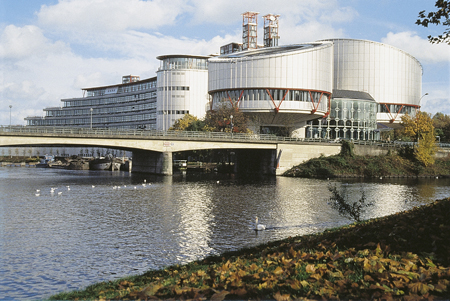 Human Rights Building (AIRDIASOL-ROTHAN) |
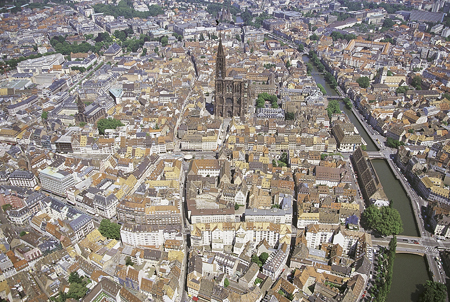 Old-Town (Y. NOTO-CAMPANELLA) |
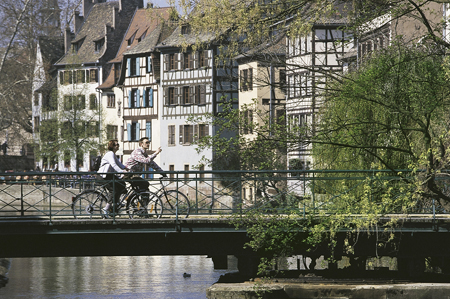 Petite France (J. HAMPE) |
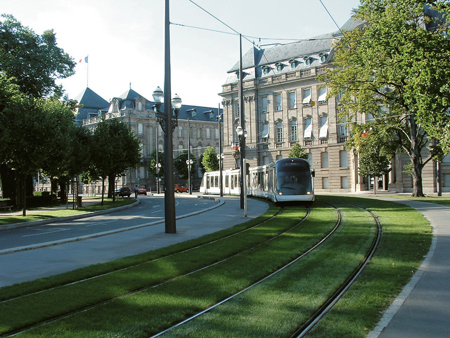 Tramway (S. HANSSENS) |
Credit: texts and pictures belong to the Office du Tourisme de Strasbourg and are copyrighted.

